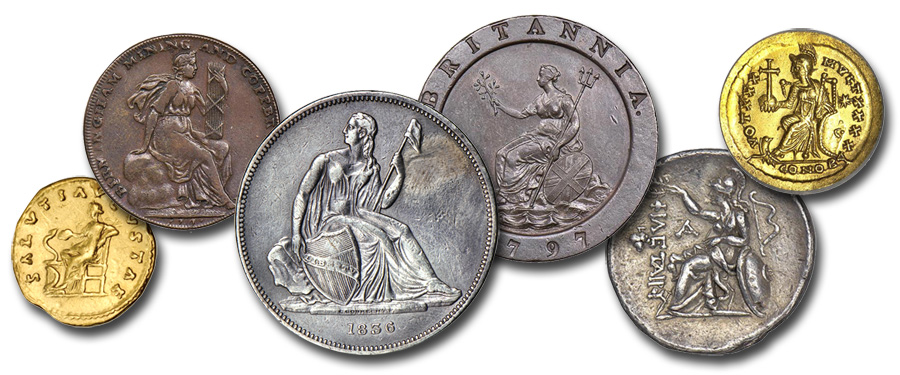
The general concept of the Liberty Seated design, featured on various U.S. silver coins beginning on the silver dollar in 1836 and used for the final time on the dimes, quarters, and half dollars of 1891, was not original to the United States. In fact, on September 5, 1835, Director of the Mint Robert Maskell Patterson sent a case of British coins and medals to Thomas Sully, who was preparing sketches for a new dollar coinage. These sketches were then used by Christian Gobrecht, newly arrived at the Mint Engraving Department, to create final designs, which by January 8, 1836 were used to strike sample impressions in tin alloy. After further modifications, as well as completion of the reverse design, the Liberty Seated motif was used on a U.S. coin in December of 1836.
The use of the Liberty Seated design on coins of Great Britain can be traced to the reign of Charles II (1660-1685). Charles II, it is said, was convinced by antiquarians in Britain to re-invent an ancient design, used on both Greek and Roman coins. The antiquarians used the argument that several Roman emperors had used a seated figure to represent Britain, leading the King to decide that this motif might be ideal. It is also said that the figure, known as Britannia on English coins, was modeled after one of Charles II’s mistresses, the Duchess of Richmond, who is said to have posed at the London Mint. As Charles II, also known as the Merry Monarch, was well known for his string of mistresses (including recognizing 14 illegitimate children by seven different women), this story is not out of character.
While the coin actually called the “Gobrecht” dollar was to last only a few years (with very few actually created for circulation), Gobrecht’s Liberty Seated motif would become the longest lived silver coin design of the 19th century. For some it would be the only design seen on dimes, quarters, and half dollars in their lifetimes. (Information from Dave Bowers’ Silver Dollars and Trade Dollars of the United States: A Complete Encyclopedia)





